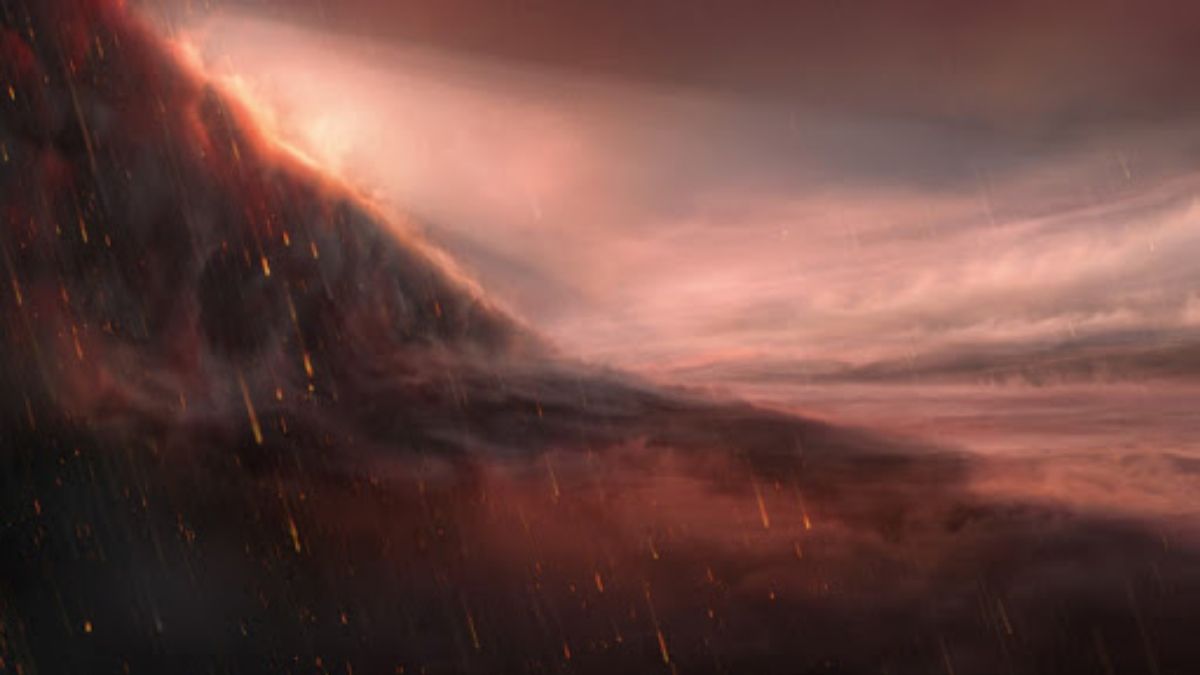Welcome to the exoplanet WASP-76b where it rains iron

Dr. David Ehrenreich from the University of Geneva with his team of astronomers has discovered a bizarre phenomenon on the exoplanet WASP- 76b. It rains iron instead of water droplets on this planet.
WASP-76b is approximated to be twice the size of Jupiter in diameter and is described as an “ultra-hot” gas giant. It lies in the constellation Pisces. The weather conditions and the chemistry on the planet redefine the definition of extreme.
The findings made by the team lead by Ehrenreich was published in the journal Nature on March 11, 2020. The astronomers explain that the extreme phenomenon on WASP-76b is caused because the same side of the planet faces the host star( the star around which the planet revolves) always.
This condition is called being “tidally locked” and is also exhibited by Moon whose same side always faces the Earth. Due to this and WASP-76b’s very close proximity to its host star its lit-face or the day-side maintains a temperature of whopping 2400 degrees Celsius. Whereas the night-side of the unlit-face maintains a temperature of 1500 degrees Celsius.
The high day-time temperature vaporizes the metals, in this case, iron whose vapors are carried to the night side by wind-speeds of 18000km/hr. The iron vapor condenses on the night side, forms clouds, and then rains as pure iron droplets or as iron sulfide and iron hydride.
Astronomers posit that the huge temperature difference between the day-side and the night-side is the cause of enormous wind-speeds. WASP-76b is 640 light-years away from the earth. It is being observed and studied by the ESPRESSO instrument present at the European Southern Observatory in Chile.

No comments